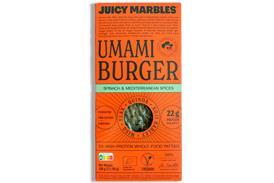
Many suppliers struggle to get decent traction with retailers and to make change happen in stores. Part of the solution is strong retailer insight – genuinely understanding what the retailer is trying to do, and how they go about things. Also, imaginative customisation – choosing from your range, and marketing support tools, to offer genuinely tailored help.
But one further skill is critical: storytelling. So how do you tell a consistent, compelling story, to get heard and make change happen?
First, identify the problem. Most commentators agree stories always start with problems. The problem needs to be a problem for the retailer, not for the supplier. Not “our brand could be performing better in this demographic, occasions or mission” but rather “your category could be performing better in this demographic, occasion or mission”. The difference is fundamental. If the buyer looks after a £300m category, don’t expect them to show much interest in a £10,000 opportunity.
Second, you need a pivotal idea. Before jumping in to sell your solution, the key is to invite the buyer to think about the problem in a different way. A powerful phrase is “what about if we looked at the problem like this?” Suddenly the conversation is not one of adversarial selling. It is about thinking together as partners.
So if you want to sell more meat, you might start by showing its declining share of weeknight meals. But, rather than immediately hawking all the cuts and flavours you can offer, it is better to first introduce a pivotal idea such as ‘the changing UK weeknight meal’. That would lead you to identifying key characteristics – quick cook, single portion, mainstream flavours, easy clear-up, etc. Once you’ve thought together with the buyer in that way, you can start to show how your products can help their shopper in that meal occasion.
Thirdly, a credible, tangible solution is required. Otherwise it’s “just an idea”. If you’re trying to get a product listing, having the actual product in real packaging, rather than a mock-up, is important. You need a clear (and sensible) sales and profit projection. Practicalities must to be covered. Case size. What it would replace on shelf. The marketing and promotional support plan. Make sure your solution answers these predictable first questions that the retailer will have – so you know you won’t fall at the first few hurdles.
Storytelling is about identifying a material problem, introducing a pivotal idea with which to think together about that problem, and only then offering tangible, grounded solutions. If the story is crystal clear in your mind, you will be able to tell it consistently. With consistency comes credibility.



















No comments yet